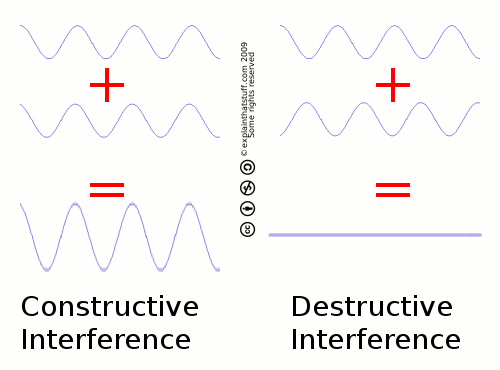Phase
Multiple waves are in phase if their crests and troughs line up. They are out of phase when they don't line up, and are 180 degrees out of phase when they line up opposite. If two waves start in phase and travel the same distance, they will end in phase. The difference in path length matters. If one wave travels slightly more than another, it will be slightly out of phase. If two waves start in phase, and the path length of one wave is exactly one wavelength longer than the path length of the other wave, they will be in phase again. This also applies to all the integers , so any integer number of full wavelengths will end in phase. This could be expressed by (m)(wavelength)=in phase, where m is any integer. They will be 180 degrees out of phase if the path length difference is ½ of the wavelength, or (m+1/2)(wavelength)=out of phase.

Interference
When two waves come together at the same point, they will interfere with each other. If the waves are in phase with each other, there will be a constructive interference. If they are completely in phase, the constructive interference will result in two times the amplitude of the wave. This corresponds to the volume of a sound wave. If the waves are 180 degrees out of phase with each other, they will destructively interfere with each other. If they are the same amplitude, the resulting effect is noise cancellation in sound waves
The destructive
interference can be exploited in technology that uses active noise
cancellation, such as noise canceling headphones. These
applications often involve a microphone to pick up the outside noise,
some electronics to invert the wave and make it 180 degrees out of
phase, and a speaker to project the inverted wave to cancel the
original noise. In a Scientific American article, author Mark
Fischetti
noted, "Coming within 25 degrees of the needed 180-degree phase shift
can cut noise by 20 decibels. Headphones that react more slowly
provide less cancellation" (Fischetti).